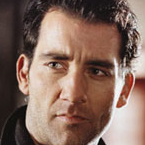Rosseau
Posts: 2757
Joined: 9/13/2009
Status: offline

|
quote:
ORIGINAL: GloriousRuse
As a thought:
One of the chief reasons for the perceived slower rate of advance in wargames is because they are fundamentally about simulating real world data and processes and then abstracting them into a game form. And they do require abstraction - even if a real world military achieved perfect awareness of where every one of it's soldiers was, at some point the guy looking at the map (digital or analog) would want to see unit icons.
Compare this to a flight sim, which is generally only deciding what it NEEDs to abstract due to resources, and what minor bits it's leaving out for playability. Making better flight sims is an incredibly hard, tool intensive, AI heavy, research driven, vastly complicate undertaking for sure. But the road map is pretty easy to see: make the models better, make the graphics better, make the flying more realistic, get the interplay of weapons centered around that plane right(er), make the MP servers more capable, make the campaigns more interactively interesting.
Now say you want to "do something new" in wargaming. You need to pick what it is you even want to do, how to represent that, what the bounds are going to be for your small slice of war, where to focus your efforts, and where to use existing conventions. And then you need to represent it the right way for this conflict, for this echelon, for this feel, for this level of playability, to stress these dynamics. You naturally probably use some starting points, and realize that even "small" changes in how you abstract things may result in huge engine changes - want to make WiTE2 WEGO? Better be prepared to either program extraordinary AI or face players demanding the control of IGOUGO back because it's not working well. Want physics-real armor penetration? Well, you need a physics engine. Don't want hexes? Great, but you better be ready to simulate everything else down to hexless granularity, which may be an impractical pain in the ass with no real changes for a game about corps and divisions.
And of course, you could get it wrong. Some people here may remember the first CMx2 series was meant to be played in real time, because it was going to show the vast advances in the engine and was "obviously" more realistic. Only the game still required you to be making decisions for every squad leader, every tank commander, and every FO...and it was a battalion level game. One of the very first things conceded was that it was going back to WEGO. How much time and effort ended up going right back to the basics?
Anyhow, long story short, I suspect the perceived slowness of advance is basically tied to this: for other games to advance they mostly just need to improve the execution of their given convention, and if they break convention they can often make the world fit the game they want. Every real advance in a wargame usually represents a new convention, and it has to use what the real world has provided.
This is a bit deep (for me), but I think I understand the gist of it. Thanks for your observations. Interesting also on CMx2. Making decisions for every squad leader, etc., makes the game a bit cumbersome for me, but I still have enough strength to play them once in a while. 
|
 Printable Version
Printable Version

















 New Messages
New Messages No New Messages
No New Messages Hot Topic w/ New Messages
Hot Topic w/ New Messages Hot Topic w/o New Messages
Hot Topic w/o New Messages Locked w/ New Messages
Locked w/ New Messages Locked w/o New Messages
Locked w/o New Messages Post New Thread
Post New Thread